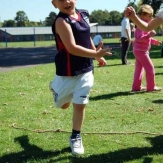Encouraging Phonics at home
PHONICS
What is phonics? With phonics, children are taught to read by learning the phonemes (sounds) that represent letters or groups of graphemes (letters). With this knowledge, children can begin to read words by learning how to blend the sounds together. Unlocking how this code works means they can learn to decode any word. For example, when taught the sounds /t/, /p/, /a/, /i/ and /s/ early on, children can read words such as it, is, tap, tip, pat, sip and sat by blending the individual sounds together to make the whole word. These words can also be broken down (segmented) into their phonemes for spelling. For example, the word ‘sat’ has three phonemes, /s/, /a/ and /t/ which the children learn to write with the three graphemes (letters) ‘s’, ‘a’ and ‘t’ that they have been taught. They will also be taught to read words – such as ‘once’, ‘was’ or ‘have’ – which don’t follow the phonic ‘rules’. They’ll build up a stock of these tricky words that they can recognise straight away.
At Bushfield Road Infant School…
- There is a systematic approach to the teaching of phonics throughout the school. Our phonics programme begins in the nursery and the incremental phases progress throughout our foundation stage and key stage 1.
- Phonics is taught in short, discrete daily sessions with a wealth of opportunities for children to use and apply their phonic knowledge and skills throughout the day and across the curriculum.
- Children begin to orally segment and blend sounds as they are ready within Reception and develop this into written segmenting and blending. The phases develop quickly and are taught in a clearly defined sequence.
- We have a whole class approach to teaching phonics that allows all children to keep up with age related work; and interventions are in place for children who need a little extra help to keep up with the high expectations we plan for.
A Guide to the Year 1 Phonic Screening Check
Top Tips on Phonics
Say the sounds correctly
It’s important that the sounds are pronounced correctly, as they would sound in speech. Try not to add ‘uh’ to consonant sounds, such as /t/ and /p/, as this makes it trickier to blend the sounds together into words.
Link sounds and letters to make words
Children are taught in school to quickly see a link between the phoneme (sounds) and a written representation of that sound (grapheme). At home, encourage your child to do the same when playing with fridge magnets in the kitchen, for example, or ‘writing’ when you are writing.
Don’t be scared – make it fun!
Phonics can seem daunting for parents who were probably taught to read in a rather different way. However, simple games such as ‘I spy’ are great for helping reading, because the children have to listen to sounds. Say, “I spy, with my little eye, something that begins with (for example) the sound ‘f-f-f ’” Look at the ‘football’ or the ‘fridge’. Make sure you refer to the first sound (not the first letter). Take it in turns, with your child saying, “I spy…” Make it lots of fun.
Practise!
Encourage your child to use their phonic knowledge when they are practising their reading. Make sure that they look at each letter in turn, all through each word. Encourage them to work out the sounds and then blend them together to make the whole word. Praise them for trying to use all the letters rather than guessing from just the first letter or the picture.
